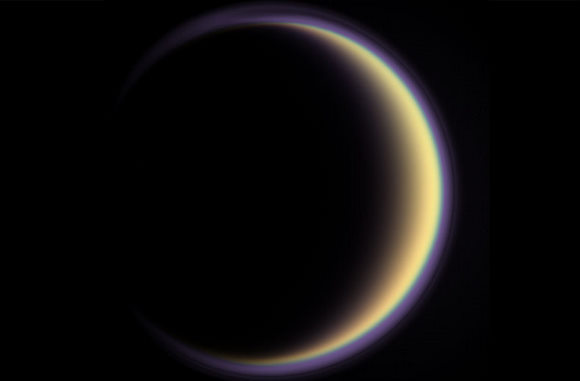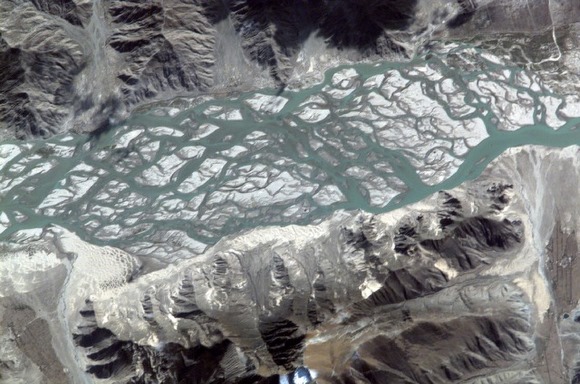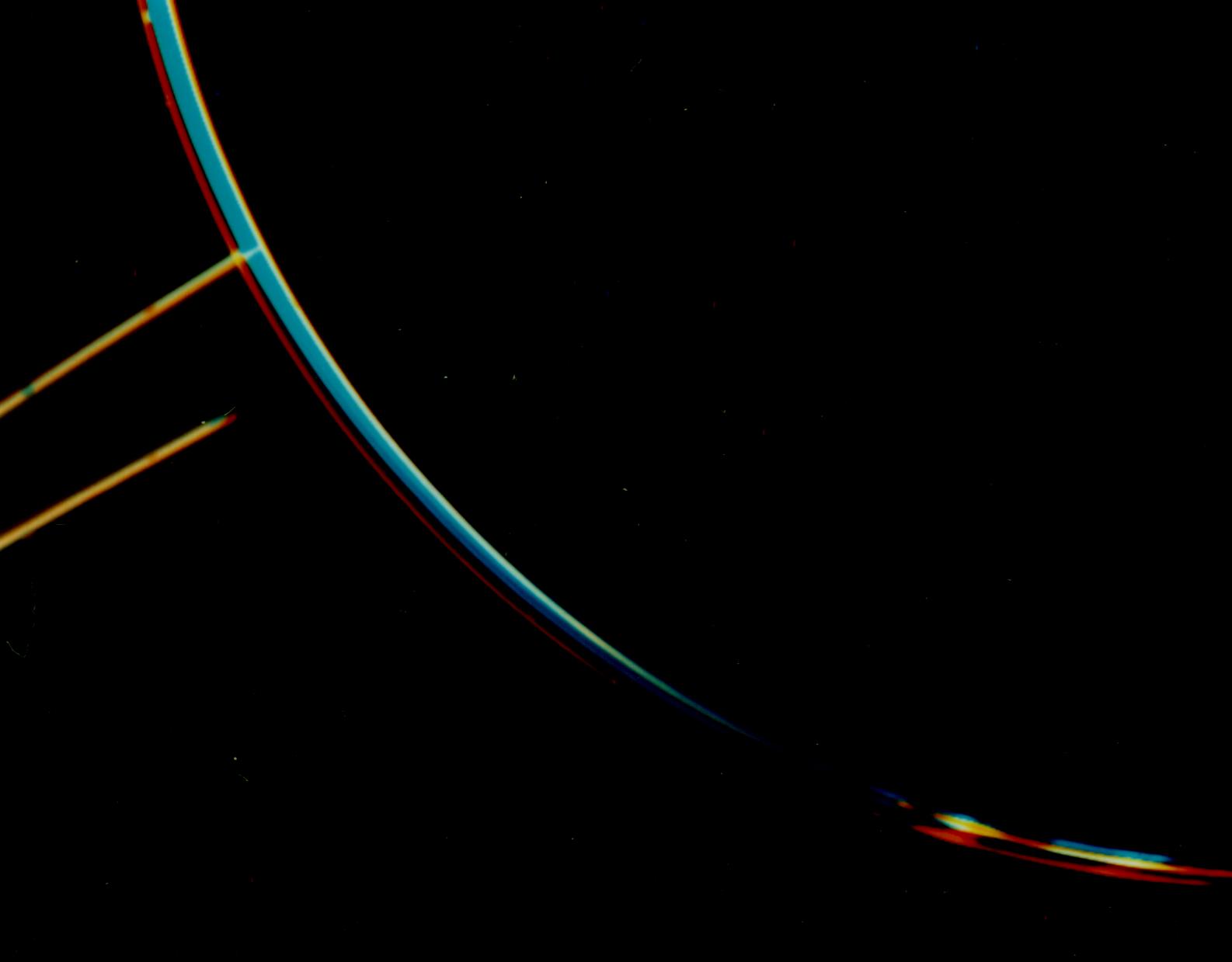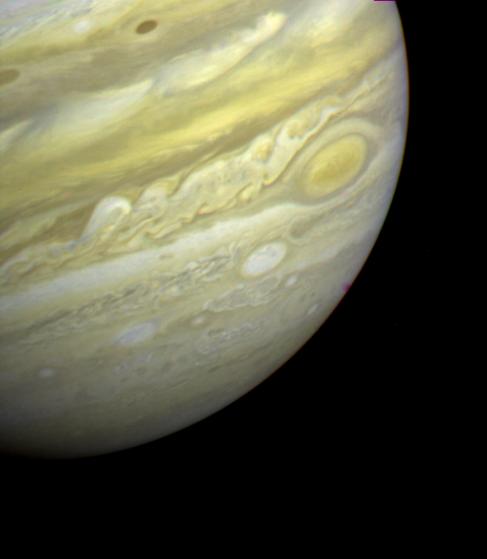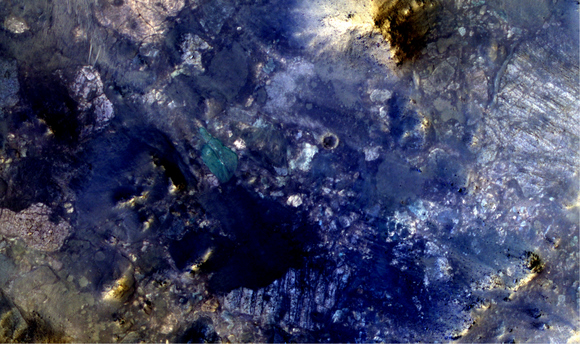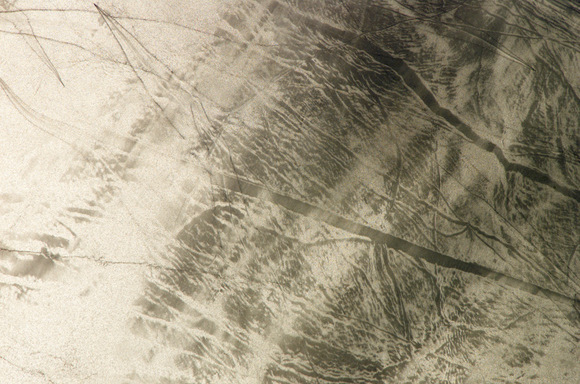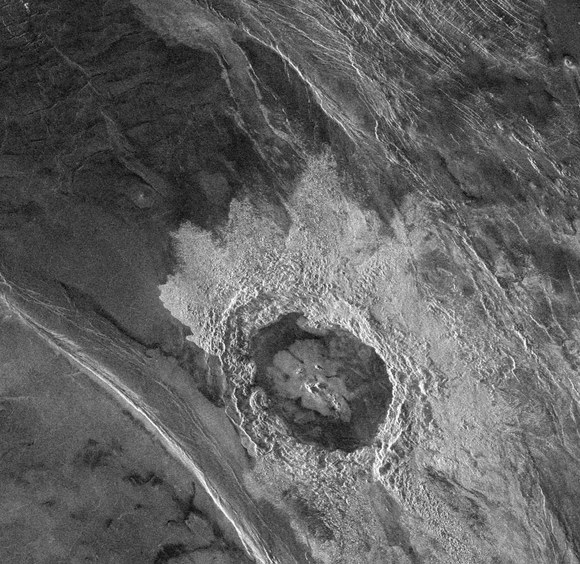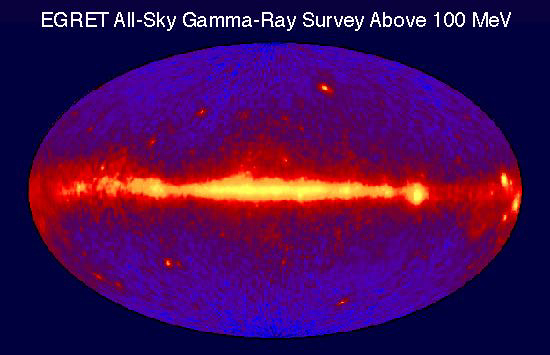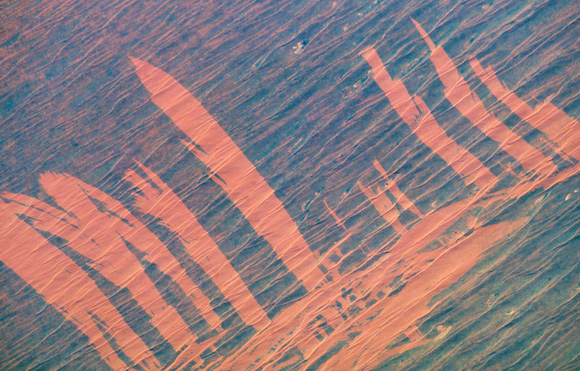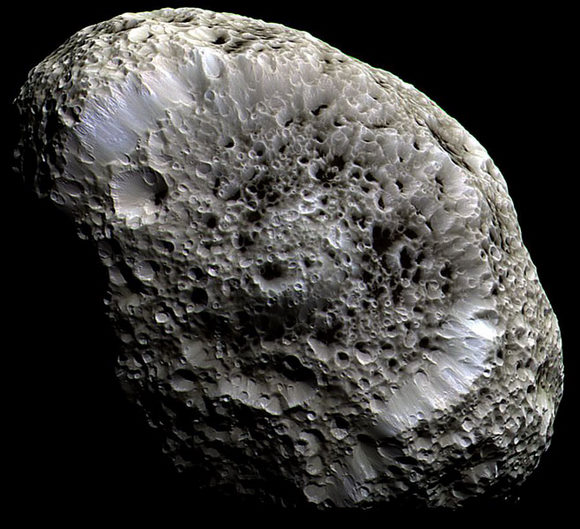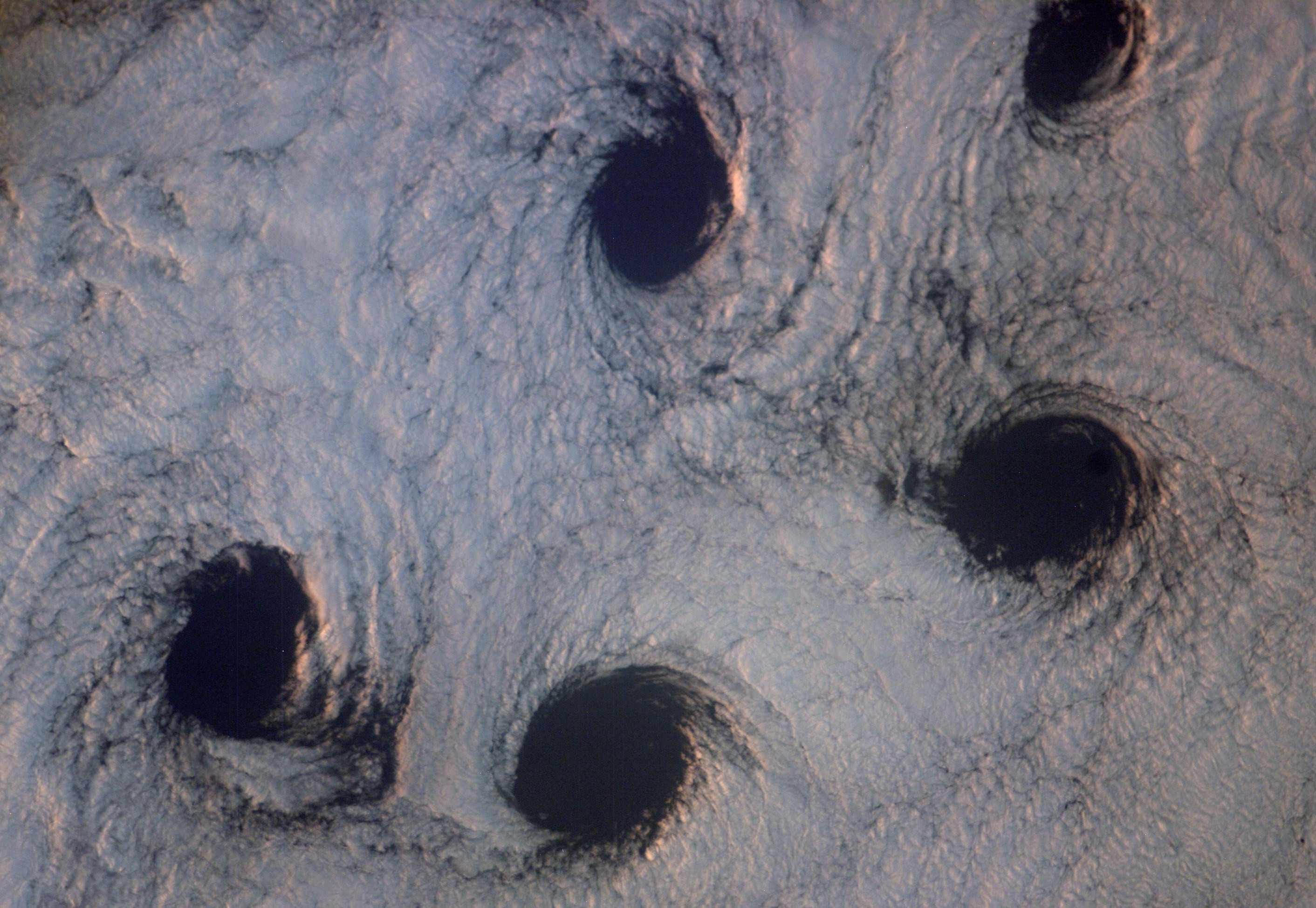Here’s this week’s image for the “Where In The Universe” challenge. Take a look at the image above and guess where in our universe this image was taken. Extra points if you can name the spacecraft responsible for the image as well. No peeking below before you make your guess. Of course, some of our readers out there don’t guess: they KNOW! Universe Today draws some pretty savvy space buffs who know their stuff. Hopefully this weekly challenge is helping everyone to hone (or show off?) their skills.
Ready? Go!
This week’s image is a composite image, composed of two images taken with Cassini’s visual and infrared mapping spectrometer, shows a crescent view of Saturn’s moon Titan.
The data were obtained during a flyby on July 22, 2006, at a distance of 15,700 kilometers (9,700 miles) from Titan. The image was constructed from images taken at wavelengths of 1.26 microns shown in blue, 2 microns shown in green, and 5 microns shown in red.
Not only is Titan a very intriguing world, its beautiful as well. Just a little chilly there, though.
How’d you do in this week’s challenge?

